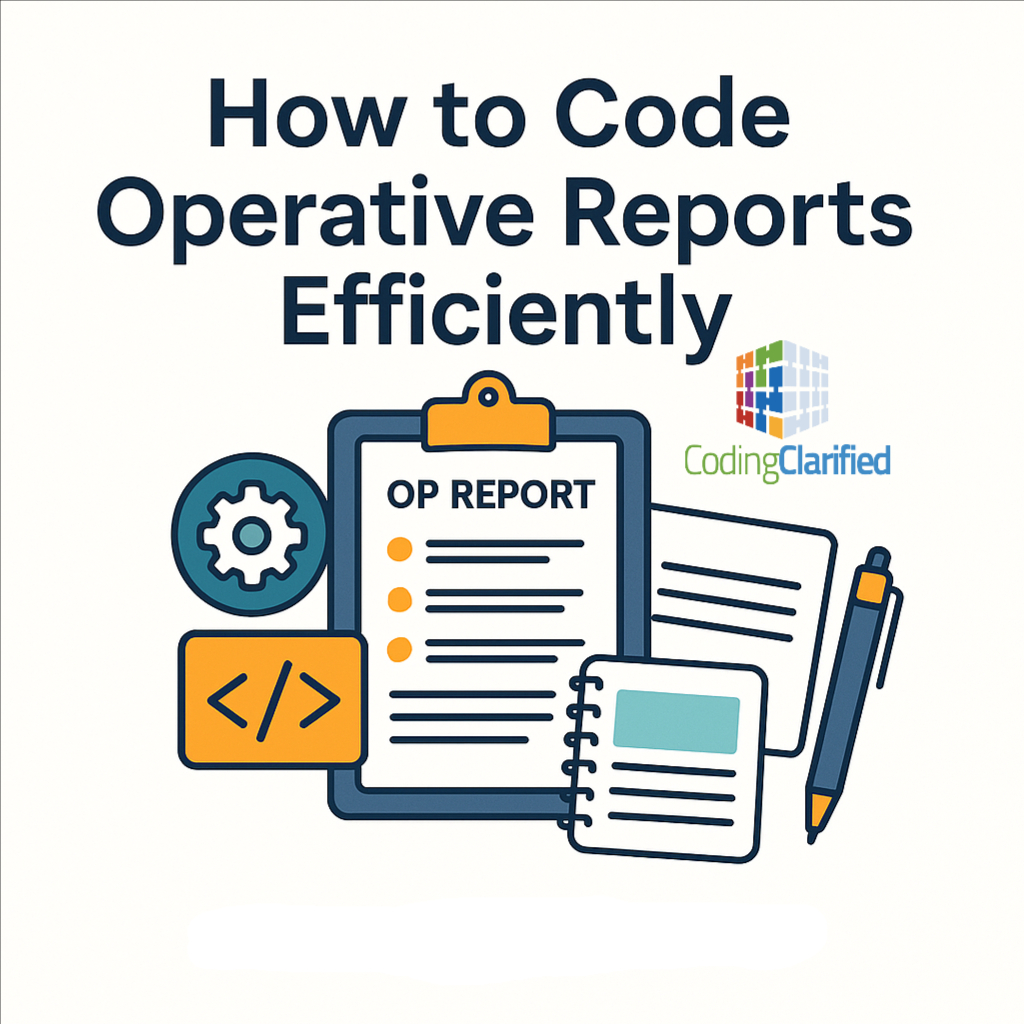How to Code Operative Reports (OP Reports) Efficiently: Steps, Guidelines & Tips
Operative (OP) reports are some of the most detailed documents in a patient’s medical record. They describe the procedures performed during surgery, the techniques used, findings, complications, and postoperative care. For medical coders, Medical coding OP reports can be both rewarding and challenging — they require precision, clinical understanding, and an eye for detail.
Let’s walk through how to code operative reports accurately and efficiently.
Understand What an Operative Report Includes
An operative report typically contains:
-
Preoperative Diagnosis – The condition the provider planned to treat.
-
Postoperative Diagnosis – The confirmed diagnosis after surgery.
-
Procedure(s) Performed – Surgical procedures completed, including add-on or secondary procedures.
-
Indications for Surgery – The reason the procedure was performed.
-
Findings – What was discovered during surgery.
-
Description of Procedure – Step-by-step narrative of what was done.
-
Specimens Removed – Any tissue, organs, or fluids sent for pathology.
-
Complications – Any adverse events or unexpected issues.
-
Condition of the Patient – Post-procedure status.
Understanding each section ensures you know where to extract accurate diagnostic and procedural information.
Steps to Code an Operative Report
Step 1: Review the Header
Start with the patient demographics, date of service, and surgeon’s name. Confirm the procedure date and ensure it matches the claim submission date.
Step 2: Identify the Primary Procedure
Locate the main surgical procedure performed. Use the “Procedure Performed” line, but verify by reading the detailed narrative—sometimes multiple procedures are listed but only one is primary.
Step 3: Read the Entire Report Carefully
Never code from the procedure title alone. The body of the report explains the actual work performed, which can affect CPT and ICD-10-CM code selection.
Step 4: Code Diagnoses (ICD-10-CM)
Pull the postoperative diagnosis as the most accurate clinical indicator. If new findings arise during surgery, add additional diagnosis codes as appropriate.
Step 5: Code Procedures (CPT/HCPCS)
Match the surgical actions described to the most specific CPT codes. Use add-on codes for additional procedures performed during the same session.
Step 6: Apply Modifiers When Needed
Modifiers (e.g., 50 for bilateral procedures, 59 for distinct procedural services) clarify circumstances and prevent claim denials.
Step 7: Sequence Codes Correctly
List the primary (most extensive or resource-intensive) procedure first, followed by secondary or add-on procedures.
Guidelines for Accurate Coding
-
Always code what is documented, not what is assumed.
-
Don’t rely solely on the header — validate with the detailed description.
-
Use CPT Assistant, AHA Coding Clinic, and NCCI edits for clarification.
-
Check payer-specific rules — surgical bundling edits vary by carrier.
-
Abstract diagnosis codes after reading the entire narrative, not just pre-op and post-op summaries.
-
Watch for excision, repair, and grafting terminology — subtle wording changes (e.g., “partial” vs. “complete”) can change CPT codes.
Medical Coding Accuracy vs Production Standards
Tips for Coding Efficiency
-
Highlight key sections (diagnosis, procedures, findings) while reading.
-
Use a coding checklist to ensure no steps are missed.
-
Leverage dual monitors — one for the OP note, one for your encoder or reference.
-
Group repetitive procedures (e.g., bilateral or multiple sites) using the correct modifiers.
-
Stay current on CPT and ICD-10 updates — new surgical techniques often bring new codes.
-
Review NCCI edits regularly to avoid unintentional code pair conflicts.
-
Use official operative templates or macros to improve consistency when reviewing multiple OP reports.
How to Increase Medical Coding Productivity
Medical Coding Productivity Standards
Medical Coding Productivity And Efficiency With AI
Common OP Report Coding Mistakes
-
Coding based only on the procedure title without reading the narrative.
-
Missing additional procedures performed during the same session.
-
Incorrect use of modifier 59 when a more specific modifier exists (e.g., XE, XP, XS, XU).
-
Confusing approach or technique terminology (e.g., laparoscopic vs. open).
-
Overlooking pathology specimen findings that affect diagnosis codes.
Coding operative reports is about accuracy, not speed—but with the right structure, efficiency follows. Mastering OP report abstraction ensures compliance, reduces denials, and supports accurate reimbursement.
At Coding Clarified, we train coders to read, interpret, and code OP reports confidently using real-world examples, CPT guidelines, and payer policies.

